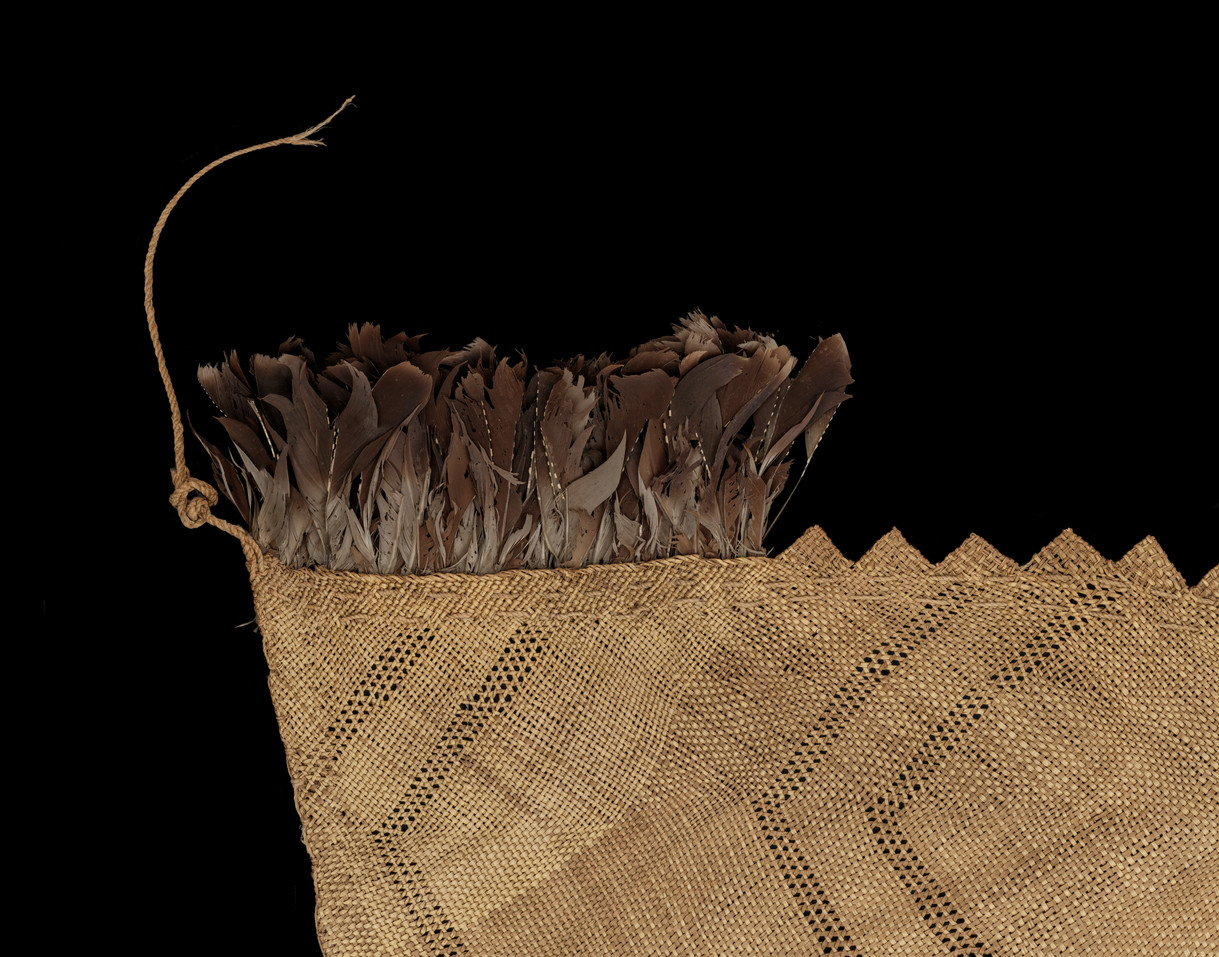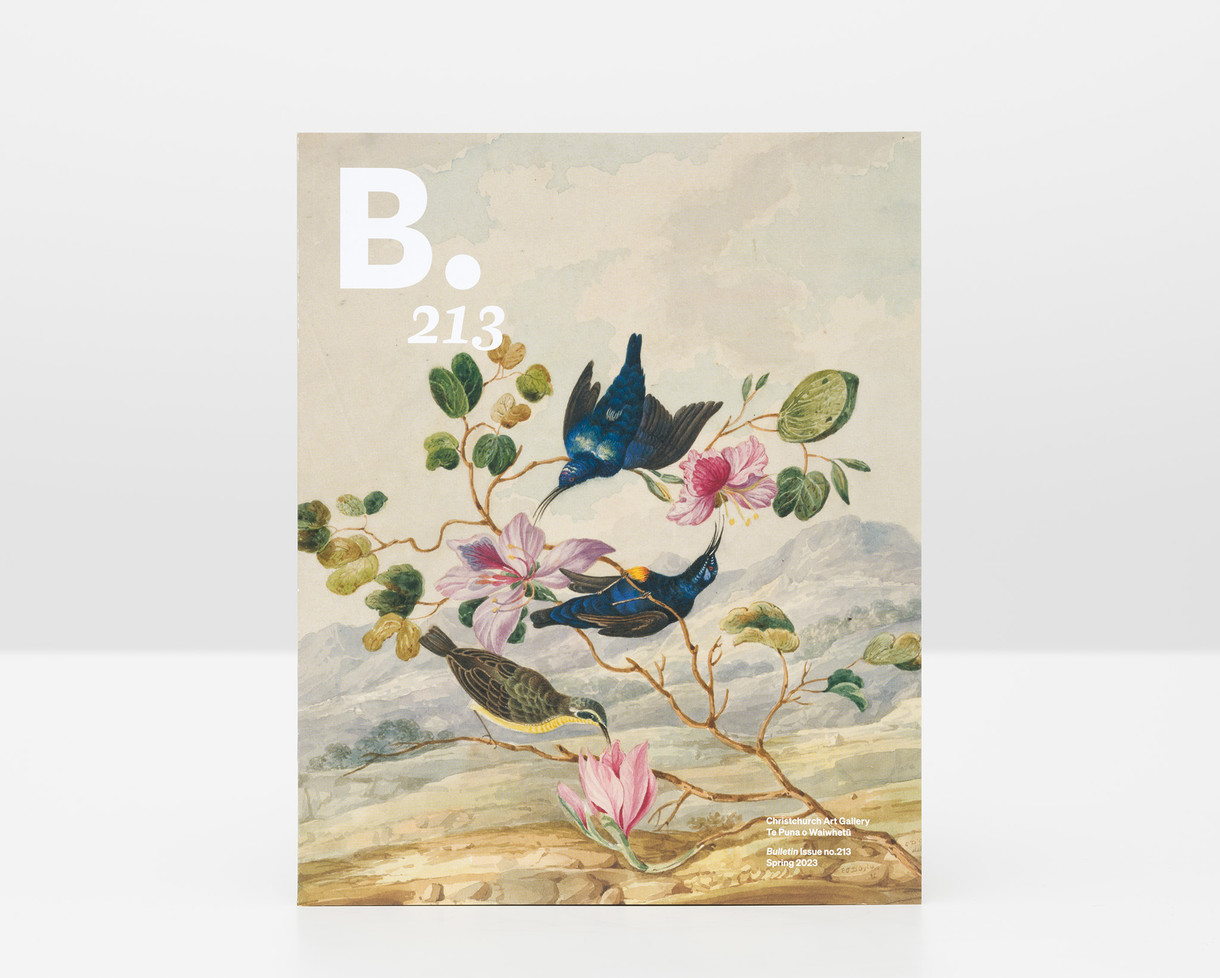Ka Oho te Taonga, Ka Oho te Tangata
As the taonga awakens so too do the people
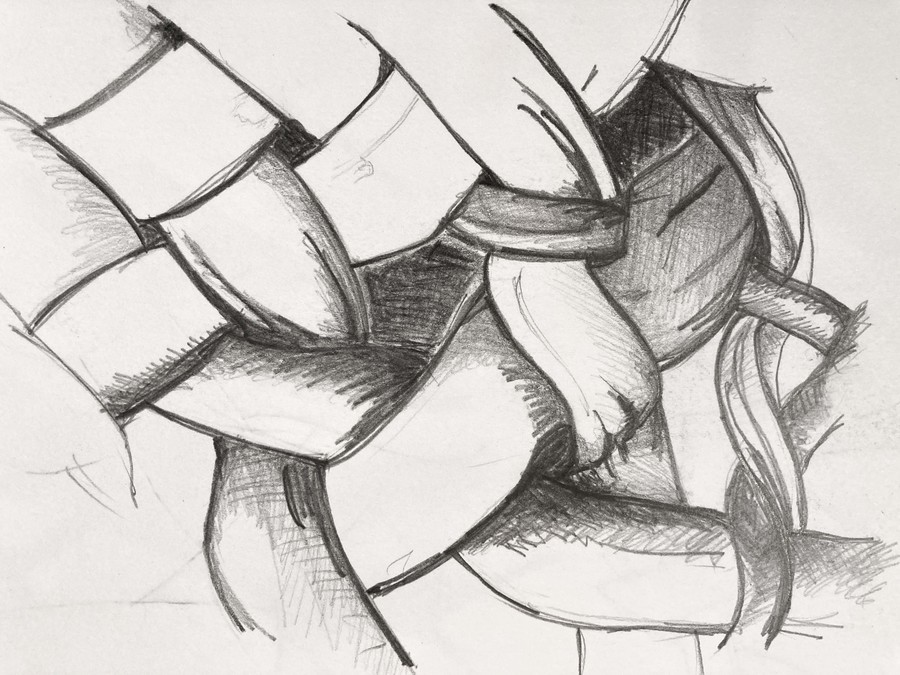
Aroha Mitchell Working drawing of weave pattern in Te Rā 2014. Pencil on paper
In 2014, a team of University of Waikato researchers led by Linda Tuhiwai Smith CNZM travelled to Norway to present their research at the New Zealand Studies Association Conference, held at the Kon-Tiki Museum in Oslo. The group included myself and Aroha Mitchell (researchers, artists and kairaranga), Rangi Mataamua (researcher and scholar of Māori astronomy) and Haki Tuaupiki (researcher, navigator/waka sailor).
Linda knew of my fascination with Te Rā and encouraged me to organise a visit to the British Museum while we were overseas. Emails flew back and forth between Aotearoa and London, and fortunately the times aligned and we arranged to spend two days at the museum documenting the construction of, and reflecting on the function of, this taonga.
We were lucky that at the time we could visit, the sail would be in storage so we could have full access. Other kairaranga had visited Te Rā previously, therefore the museum staff were very aware of the keen interest of many in Aotearoa, and considerate of the significance of this fascinating taonga to us. Maureen Lander had kindly sent me detailed photographs, notes and measurements of Te Rā from her visit some years earlier, and I had used these as I attempted to weave some of the techniques. However, I needed to visit Te Rā myself for closer analysis, so this trip was something I had been looking forward to for some time. Consequently, I was very excited to at last ‘be’ with Te Rā.
As kairaranga, Aroha and I intended to concentrate on the construction and functional aspects of the raranga, in order to rediscover and recreate the techniques used in the production of this fascinating textile. As researchers it was also important to us that the expertise of sailors and navigators be included, and accordingly our team was complemented by Haki and Rangi, who broadened our scope of engagement with Te Rā
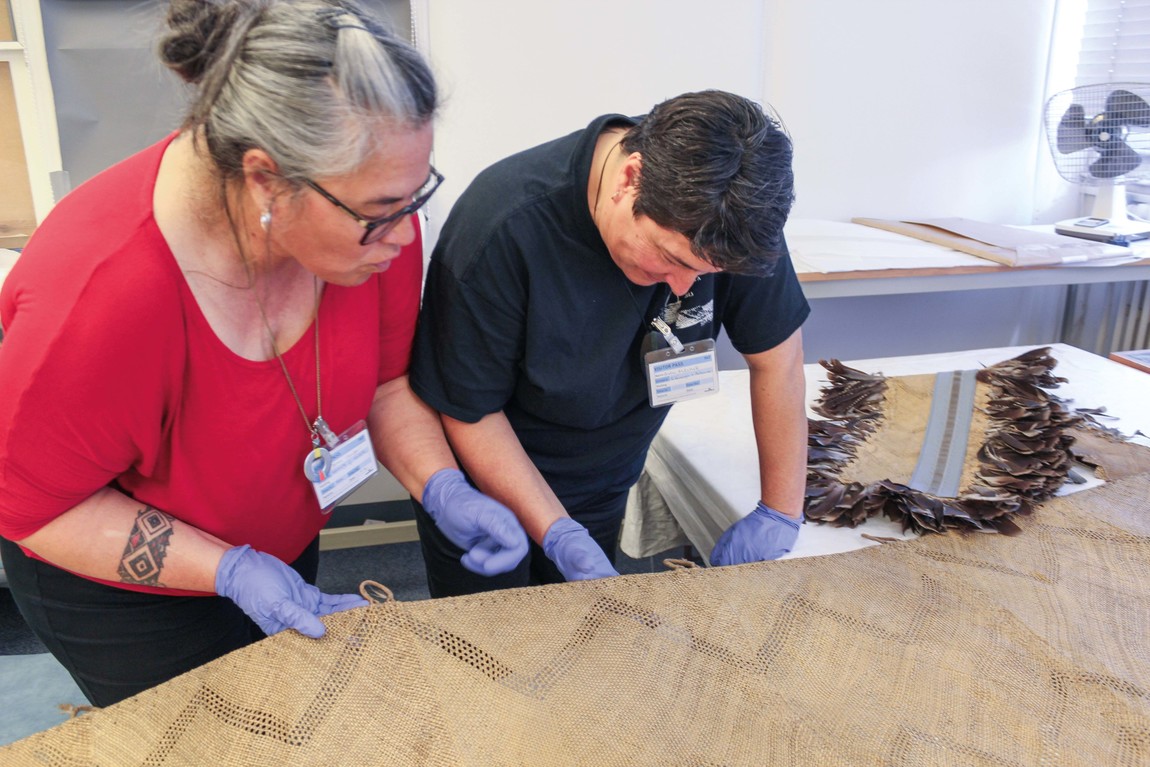
Donna Campbell and Linda Tuhiwai Smith at the British Museum in 2014.
We arrived at the British Museum stores in London on a hot sunny day, full of enthusiasm for the task ahead. As we entered the space of the museum store I felt heaviness and sadness, as well as the thrill of at last seeing Te Rā. I sensed the taonga stored in these rooms and their mauri and thought of how lonely Te Rā and the many other treasures in here must be, being so far away from home. It was wonderful to be visiting our taonga, our tūpuna – I felt awed to be there, and humbled by the energy of our taonga. Te Rā was rolled up awaiting us. As we carefully unrolled her the reciting of karakia by Rangi and Haki began.
Their voices reverberated around the storeroom, wrapping Te Rā in a cloak of aroha and mana as it was awakened again. This taonga before us embodied the ancestors: those who made her, those who had sailed with her, all those who have had contact with her, and all the tūpuna who have gone before us. The depth of knowledge in the ancient karakia Rangi and Haki recited brought forward waves of emotion in all of us. These karakia related to Te Rā as an ancestor, a taonga with mauri and mana. They opened up the space for us to be able to engage with Te Rā and to acknowledge its significance. The embodiment of the ancestors was brought forth through the process of karakia, and within the walls of the museum store all the taonga from many other places were also acknowledged.
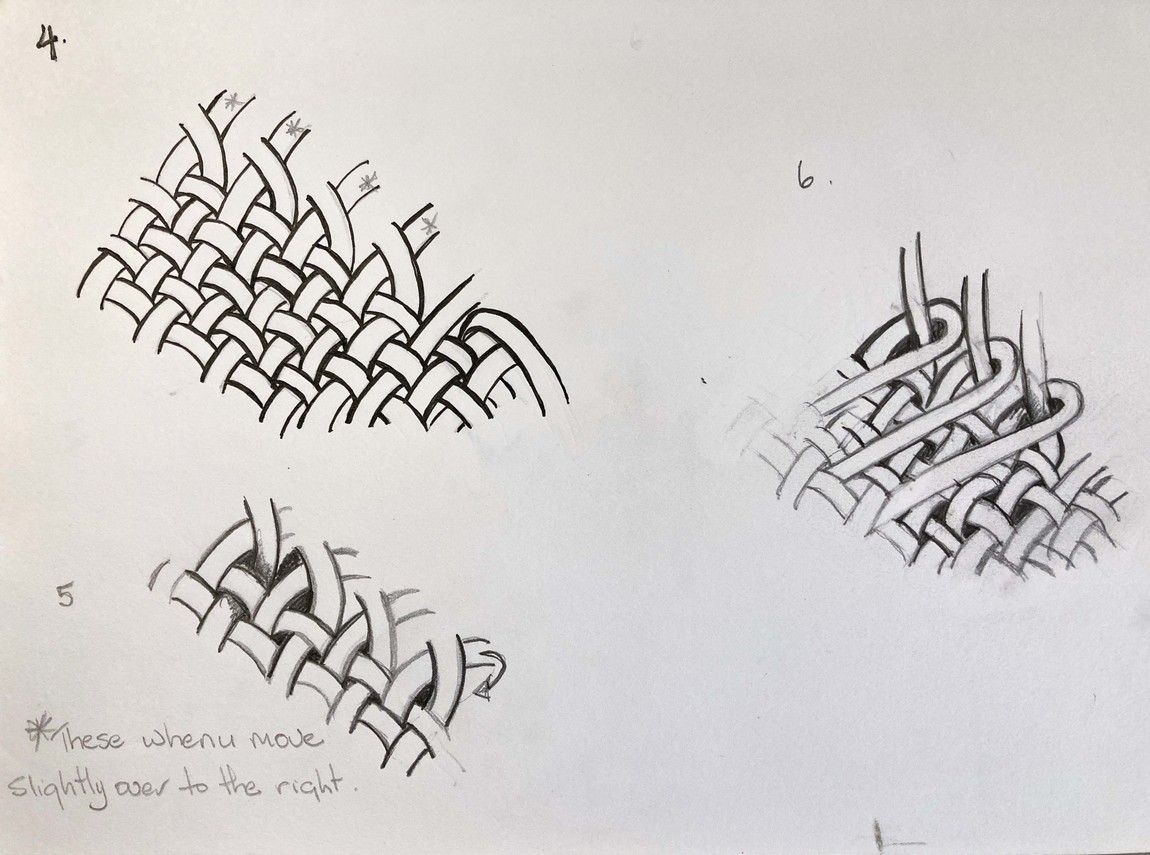
Aroha Mitchell Working drawing of weave pattern in Te Rā 2014. Pencil on paper
Like the raranga technologies developed by our tūpuna in the creation of kākahu, Te Rā embodies the interconnectedness of our tūpuna – their relationship with and understanding of their natural world. Te Rā is an exemplar of some of our earliest traditional ecological knowledge and provides us with a view into both the power of raranga and the skill of the kairaranga to create such a taonga. It is important th this knowledge is investigated by both current and future generations.
The fascinating raranga techniques used in the creation of Te Rā are already inspiring new works for kairaranga and kaiwhatu alike. Te Rā exemplifies the embodied knowledge inherent within our taonga, epitomising woven memories. This embodied knowledge is what many kairaranga are working to ensure remains available for our tamariki and mokopuna.






